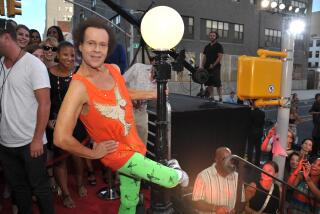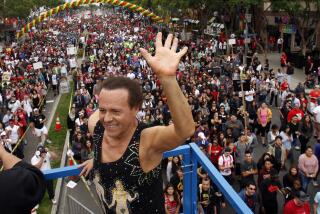NEWS ANALYSIS : Simmons Forced Lockheed to Heed Concerns of Shareholders
- Share via
Lockheed and its dissident shareholder Harold C. Simmons fought, bickered, maneuvered, nagged, criticized and lobbied against each other for 31 months during one of Wall Street’s longest takeover battles.
As the smoke clears from the battlefield after Simmons’ sale of his Lockheed shares, the results are:
* Simmons lost an estimated $100 million or more on the stock, proxy battle and financing.
* Lockheed lost $20 million in battling Simmons.
* Lockheed has been forced to pay closer attention to the concerns and criticisms of its institutional shareholders.
* Two key takeover defenses--employee stock ownership plans and poison pills--were demonstrated as a powerful defense against a raider.
Lockheed Chairman Daniel M. Tellep on Monday called Simmons “disruptive” but said the saga will do little lasting damage to the Calabasas-based aerospace firm.
“It was a great diversion of time, energy and money,” Tellep said. “We would have had $20 million plus to give to shareholders had he not been on the scene.”
But many of the shareholders are the very ones who lent support to Simmons, who captured 38% of votes last year in a proxy battle to gain seats on the board.
“The institutional people really appreciated Simmons putting Lockheed’s feet to the fire,” said Paine Webber analyst Jack Modzelewski. “Simmons was a catalyst for change and, like any catalyst, they don’t always enjoy the rewards. Simmons was a lot like Gorbachev.”
Modzelewski estimates that Simmons lost $100 million in pursuing efforts to control Lockheed, including $37.5 million in stock losses, $15 million in proxy contest costs and $48 million in financing costs.
“I don’t think he ever had the resources to go all the way,” he added. “It is surprising he didn’t lose more money. A lot of holders of defense stocks did worse than he did.”
And some defense firms did better than Lockheed. Tellep said the firm always had underlying strength and that it has returned to strong performance today. But he allows that the Simmons affair wrought some changes.
“The proxy contest sensitized us to shareholder rights issues,” Tellep said.
He added, “We have devoted a lot of energy and time to being connected with and in touch with our institutions. That will continue, even though Simmons won’t be on the scene.”
Wolfgang Demisch, aerospace analyst at UBS Securities, praised the effect Simmons had on Lockheed, saying his “impact has helped raise the entire management’s consciousness of the shareholders. Clearly, it accelerated the employee stock plan.”
But those effects may have a negative side, influencing the company to be more oriented toward the short term. Tellep insists that the majority of Lockheed’s institutional shareholders are long-term-oriented.
Tellep isn’t the only one happy about Simmons’ exit. Wall Street also tired of the continuing battle.
Paul Nisbet, Prudential Securities aerospace analyst, called Simmons a “pest” who revealed a naivete about the defense industry.
“It really hasn’t held my interest in more than a year,” said Smith Barney analyst Michael Rosen. “It became obvious last year that Harold Simmons had made a tactical error, and he has been scrambling to recoup his investment ever since.”
Simmons was lucky to get $40.50 for his Lockheed shares. The stock hit a low of $24.75 the past 12 months, before the Persian Gulf War boosted the prices of all defense stocks.
Lockheed Share Prices 1991 Monday close: $40.50, down $2.50 Source: Dow Jones
More to Read
Inside the business of entertainment
The Wide Shot brings you news, analysis and insights on everything from streaming wars to production — and what it all means for the future.
You may occasionally receive promotional content from the Los Angeles Times.











